The US economy is stuck in one of the most sluggish recoveries in history. Growth is just 2% and it will remain slow as consumers and companies work off vast amounts of debt. The country has gotten off track and neither political party has any answers.
These sentiments were written in Time in 1992, the year one of the biggest growth eras in American history began. But these same words are often used to describe the current economic environment.
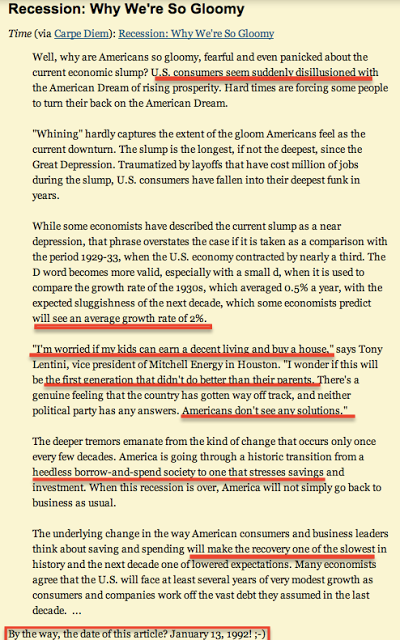
Not helping matters is the Fed, which appears to have boxed itself into a corner. It's policies have been ineffectual and have created record budget deficits. The consensus is that the Fed has overstayed its course. A new way of handling monetary policy is needed.
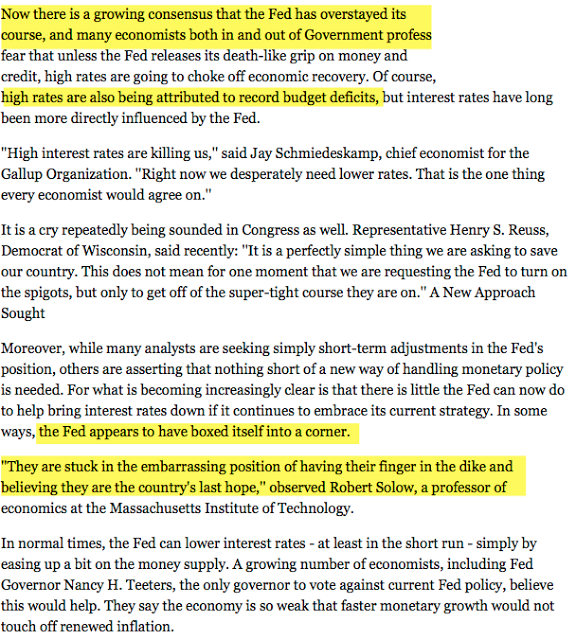
The year these words were written is 1982, when America was on the threshold of an 18 year bull market. But central bankers and their policies were as hated then as they are today (from the NYT).
Irresponsible central banker policies are forcing consumers to overspend. Auto loans today are like home loans in 2006. Perhaps nowhere are low rates more visible than in the stock market, where investors have been "forced to buy risk assets". Margin debt today is as high as at the stock market bubble peaks in 2000 and 2007; the S&P fell 50% within two years both times.

The chart above is from two years ago. Since then, the S&P has given shareholders another 15% return.
Not only is margin debt excessive, but companies are overstating their earnings. No less than the chief accountant for the SEC has complained about non-GAAP earnings numbers being "EBS", or "everything but bad stuff."
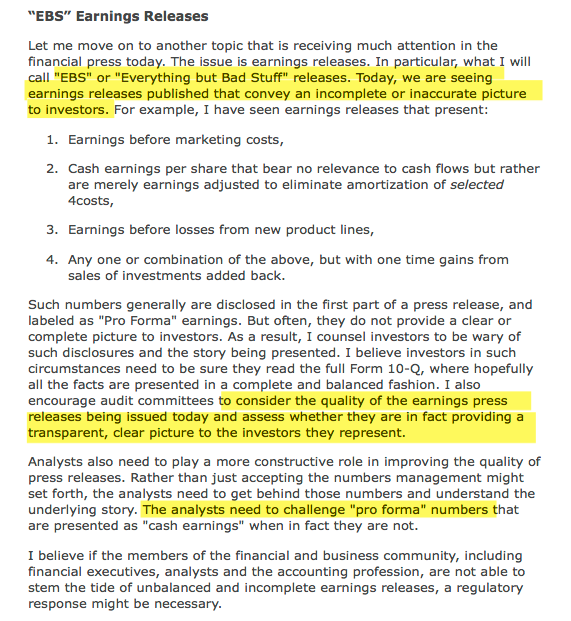
While non-GAAP earnings have become a hot button in the past month, the statement above was made 16 years ago (link). It was an issue even earlier, with non-GAAP earnings positioned like this: "If all this bad stuff hadn't happened, we would be having a pretty good quarter."

Low rates by the Fed and non-GAAP earnings are just a few of the ways share prices are manipulated. If those don't work, companies can just force the price higher by buying shares themselves, a practice "so commonplace as to be a cliche."
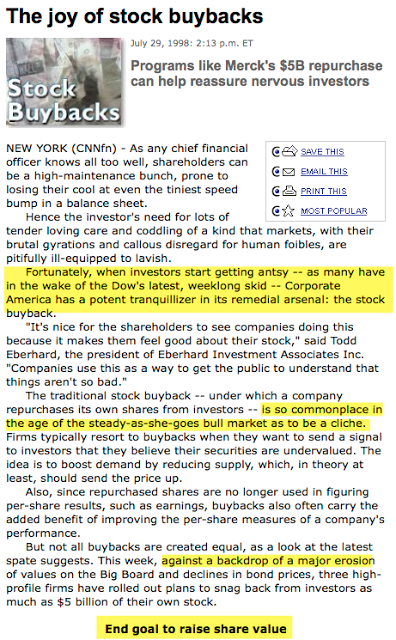
As the article states: "the end goal is to raise share value." This was nearly 20 years ago (link). And share buyback popularity (and criticism) was just as common 10 years ago, too (link).
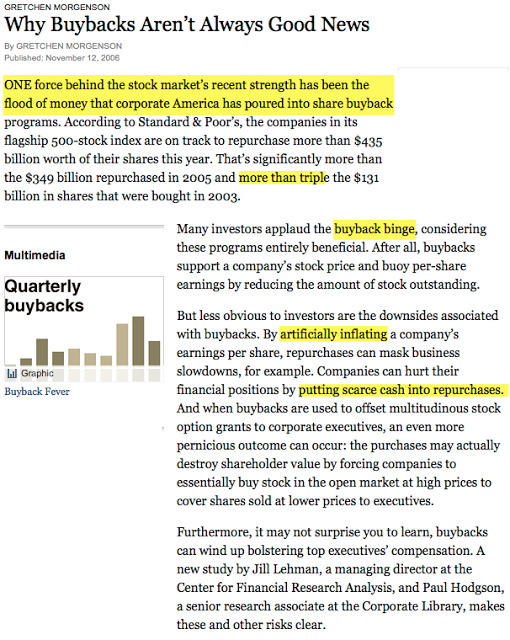
Rounding out current investor worries is China, which is entering into a crisis. Overbuilt, overpopulated, corrupt and full of insolvent banks. “The People’s Republic has five years, perhaps ten, before it falls.”
Gordon Chang's book was published in 2001. A paper with the same title written by a different author was published in 1995. For more than 20 years, China has been on the brink of collapse.
Weakness in China and the rest of the world is reflected in shipping rates, also known as the Baltic Dry Index. The cost of shipping has fallen 90%. A fleet of ships larger than the US navy lay idle. It's a big reminder that the economic recovery is still far off.
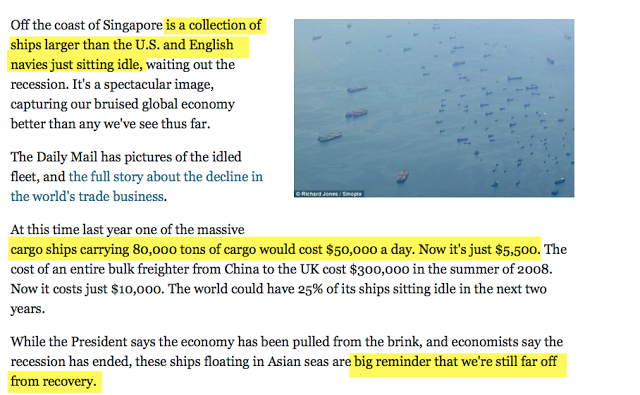
This story was written in September 2009. Seven years and 14 million new US jobs later and shipping rates are still low.
A weak economy, a Fed which is painted in a corner, margin debt, non-GAAP earnings, share buybacks, China, world trade. These are some of investors' current concerns. They were all concerns 10 years ago and some were concerns 20 or 30 years ago too.
The story in the stock market is almost always the same: the fundamentals of companies and the economy are weak, but central banks, corporate buybacks and earnings manipulation are keeping share prices artificially afloat.
When everything is lined up perfectly in the stock market, the bull market will be over.
